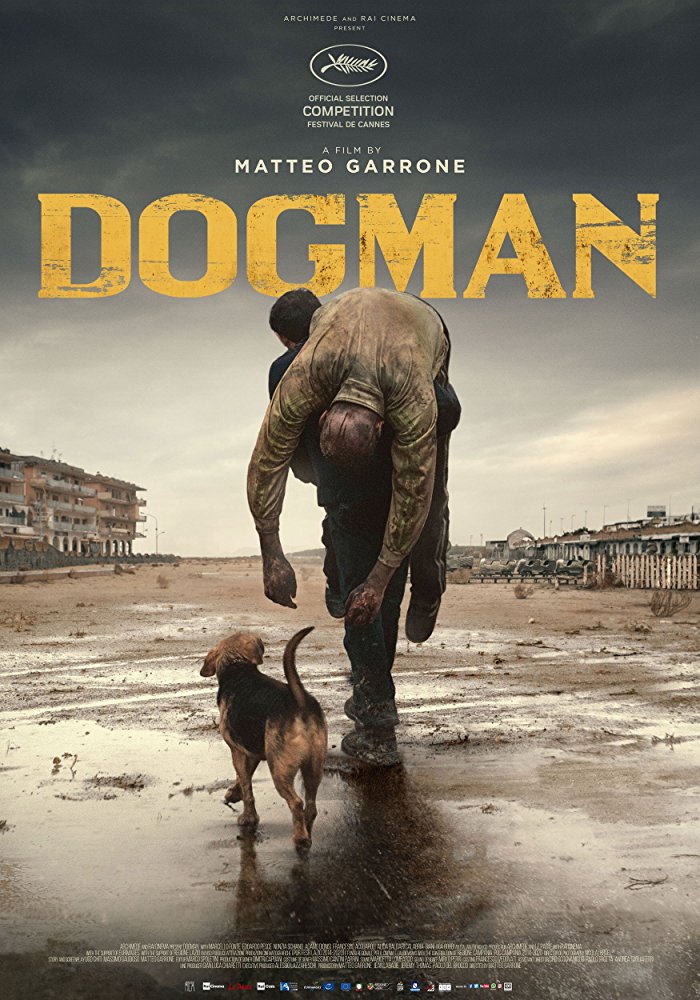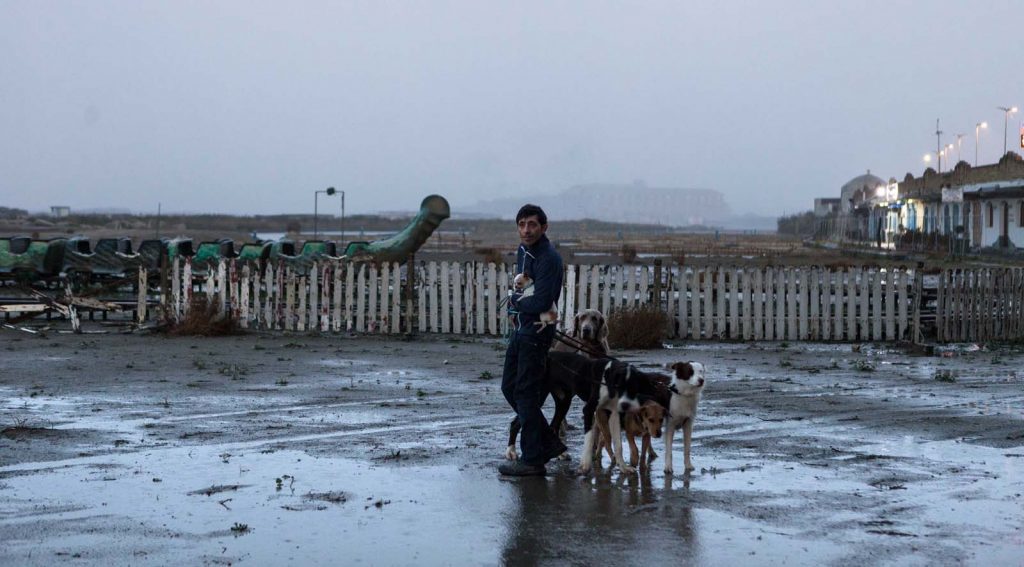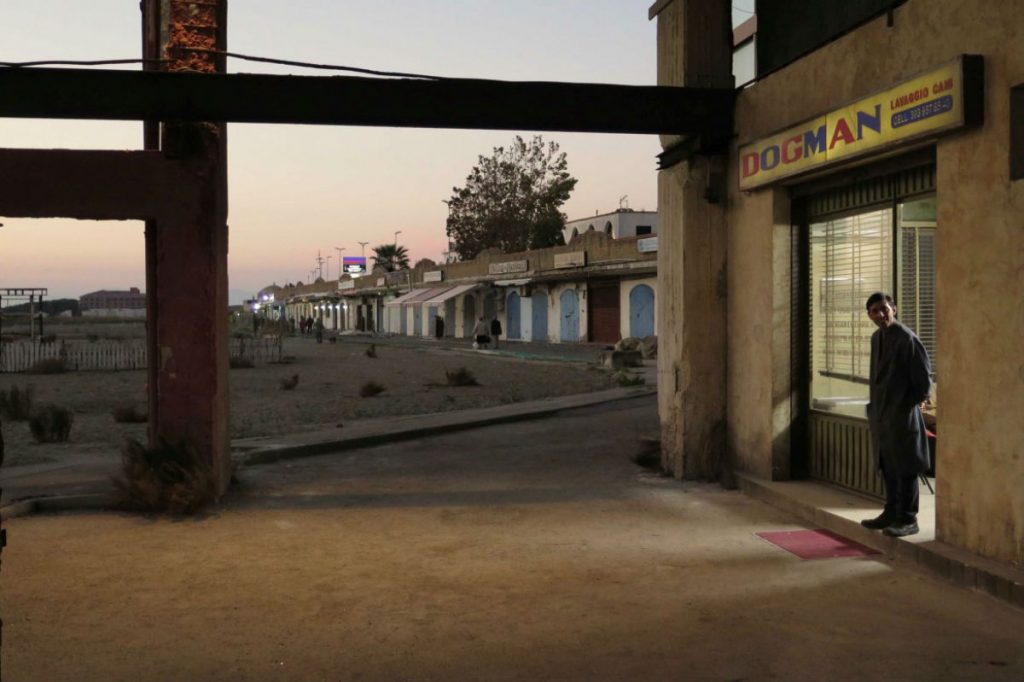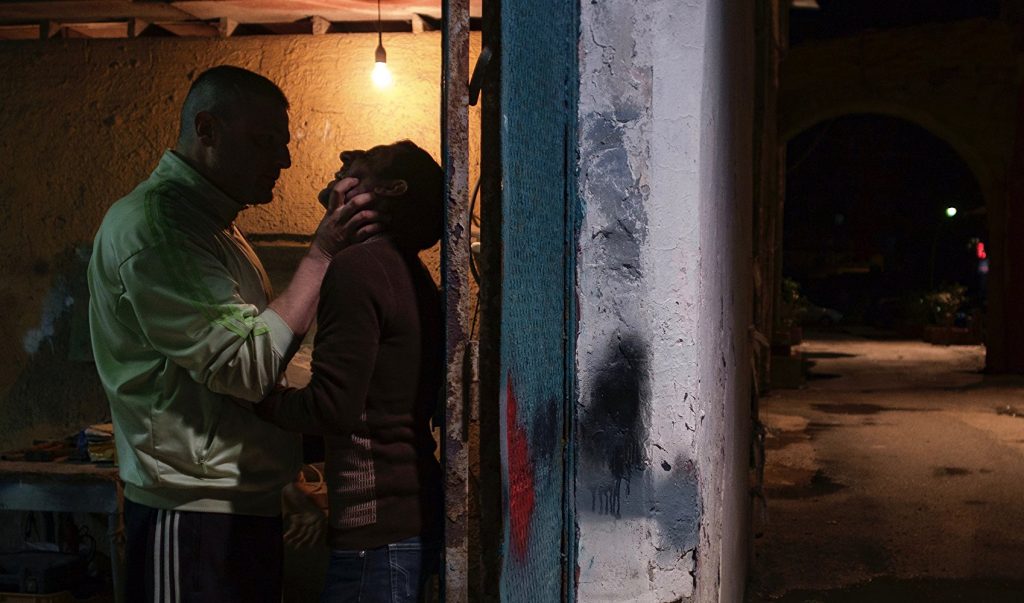Dogman, the Italian film that world premiered (in competition) at the 2018 Cannes Film Fest, is, artistically speaking, a second-tier feature from Matteo Garrone. It is not as powerful as his splashy 2008 feature debut, Comorrah (still his best work), but one or two notches above Reality and his first English-language feature, Tale of Tales.

The story is rather simple and told in straightforward manner, without any flights of fantasy or magical realism. My Italian colleagues told me that the film is inspired by a gruesome 1980s homicide case
The main reason to see the film was the performance of the physically diminutive buy emotionally expressive Marcello Fonte, which was deservedly singled out by the Cate Blanchett-led jury for Best Actor kudos
Fonte, who is short, has a long, narrow face, with a sharp nose and big soulful eyes, plays Marcello, the owner of a grooming parlor for dogs, located in a shabby Italian seaside resort whose similarly looking apartment blocks change their image, contingent on the time of the day (or night) and Garrone’s particular ways of shooting them.

Marcello is a divorced man who loves his daughter, but most of the time he sends at his shop, taking care of his wide variety of dogs. He treats his canines as human beings, and in one of the film’s most tender moments, he rescues a dying chihuahua from a freezer by talking to it, encouraging the suffering, nearly frozen animal to follow his orders by rewarding its breathing and movements in the resuscitating process.
With his sad face and isolated life, Marcello is sort of a clown-like figure out of an old Fellini movie—the male counterpart of Gulietta Masina’s naive and primitive girl, who is tortured by the heartless and brutish Zamano (Anthony Quinn).
In this tale, the major interactions are between Marcello and Simone (Edoardo Pesce), a tall, big, coked-out, dumb former boxer. Petty criminal Simone benefits—and takes pleasure too—from tormenting the town’s residents, including and especially nobodys like Marcello, who to make ends meet, sells small wraps of cocaine on the side.

Before he knows (or likes) it, Simone becomes a regular customer, sort of a threatening and unwanted guests in your house, who is cursed by hot temperament and bursts of sudden physical violence.
Matteo uses the extra money to take his young and adoring daughter Alida (Alida Baleari Calabria) on scuba-diving vacations, which serve as the only lyrical sequences in an otherwise cruel movie that is often too harsh and grim to watch.

I found the film’s first part, which is expository, to be more engaging and compelling than its second, set one year later, in which it becomes a betrayal and then brutal revenge saga that would do Tarantino (Reservoir Dogs) proud.
Placed in a non-win situation, Marcello is forced to betray the trust of his fellow neighbors and other residents, resulting in further isolation and ostracization by the community that he actually loves and truly belongs to.

Will Marcello pull courage, stand up to his rights and punish Simone, who is literally twice his size, for forcing him to engage in a criminal act and lose his greatest qualities–genuine goodness and human dignity.
Marcello goes all the way from being a selfless good-neighbor Sam to a vicious man, who not only betrays his friends but sinks down to a level of animalistic and gory behavior that he himself had never thought he was capable of.
Garrone, always excellent with his variegated camera, ends the grim tale with a most fitting image: a wide shot of Marcello, alone and isolated, surrounded by buildings that, like him, appear to be crumbling down.
By telling a very particular story, in a very specific geographical and social milieu, Garrone elevates his gruesome tale into a universal allegory, adding yet another meaning to the picture’s title.










